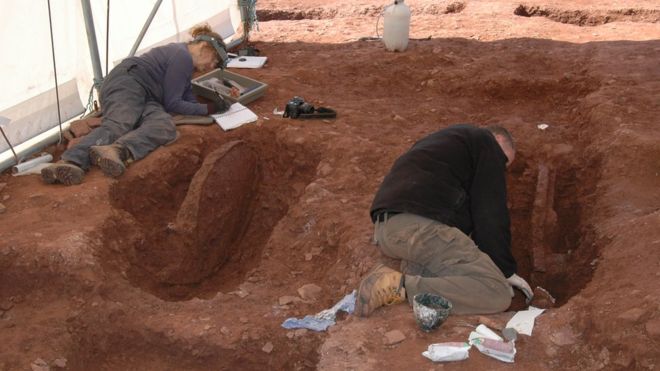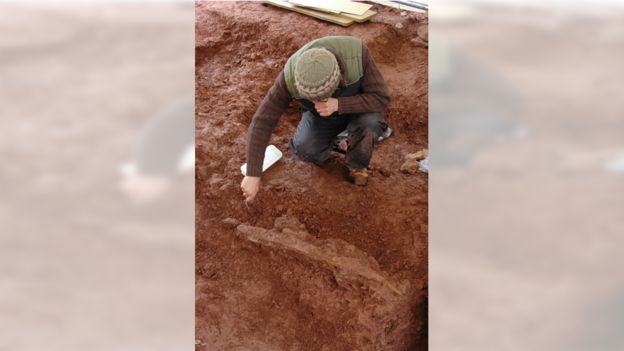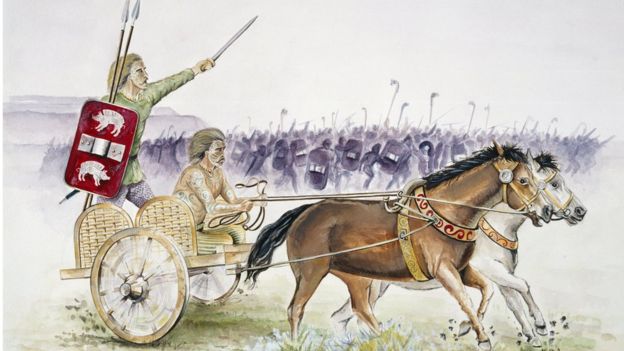Iron Age Chariot Burial Discovered in Wales

Archaeologists have discovered more artifacts at the first Celtic chariot burial site to be found in southern Britain.
Two iron tires and a sword from the chariot had been retrieved throughout an excavation in Pembrokeshire.
The precise website stays a secret and follows the invention of ornamental objects by a steel detector fanatic on the identical land in February 2018.
Nationwide Museum Wales is conserving the chariot items.
Archaeologists had suspected they might uncover extra beneath the farmland the place steel detectorist Mike Smith discovered a variety of objects related to a chariot.
Following a preliminary investigation in June 2018 by archaeologists from NationwideMuseum Wales and Dyfed Archaeological Belief, a dig was carried out in March and April, funded by Nationwide Museum Wales, Cadw, and the Nationwide Lottery Heritage Fund.

The staff found bronze artifacts, the iron tyres of the chariot wheels and an iron sword.
Adam Gwilt, principal curator of prehistoric archaeology at Nationwide Museum Wales, stated: “It’s the first chariot burial to be discovered not simply in Wales, however in southern Britain.
“Chariots, like warfare and ceremonial autos, had been used to show the ability and id of their homeowners and tribal communities in late Iron Age Britain, because of the nice ornament on these artifacts exhibits.
“Whereas we nonetheless know little about their proprietor, these chariot items in all probability belonged to a person or lady of some standing inside their tribe or neighborhood.”
Nationwide Museum Wales hopes to purchase the objects discovered by Mr. Smith to allow them to be displayed alongside the chariot wheels and sword at St Fagans Nationwide Museum of Historical past.
Dr. Kate Roberts, the principal inspector of historical monuments at Cadw, stated: “A singular archaeological discovery like this stirs our creativeness – we marvel who the charioteer was and concerning the world, they lived in.
“By finding out these artifacts we hope to study extra a few time when the nice change within the form of the Roman Empire was sweeping throughout Wales.”






